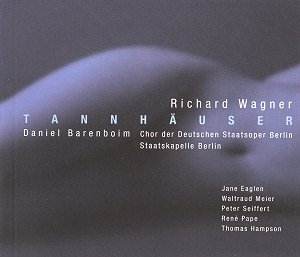 Composer: Frederic Hymen Cowen (1852-1935)
Composer: Frederic Hymen Cowen (1852-1935)
Works: The Butterfly’s Ball, Indian Rhapsody, Symphony No. 3 in C Minor (Scandinavian)
Performers: Czechoslovakian State Philharmonic Orchestra, conducted by Adrian Leaper
Recording: House of Arts, Kosice, Czech Republic, 1989
Label: Marco Polo 8.223273
Frederic Hymen Cowen, a prominent yet often overlooked figure in British music, emerges from the shadows through this engaging recording that highlights his orchestral prowess. Cowen’s diverse body of work spans across symphonic, choral, and operatic forms, with a particular knack for melody that is evident in the selections presented here. His Symphony No. 3, dubbed ‘Scandinavian,’ alongside the lighter fare of The Butterfly’s Ball and the exotic Indian Rhapsody, reveals both the depth and breadth of his compositional voice, which was celebrated during the late 19th and early 20th centuries but has since fallen from the concert hall’s spotlight.
The Symphony No. 3 is a robust work that encapsulates Cowen’s vivid orchestral colors and thematic development. The first movement opens with a charming theme introduced by the woodwinds, soon interrupted by bold, Beethoven-esque chords that set an energetic tone. The flowing melody that follows showcases Cowen’s melodic gift, although it occasionally strays into territory that feels familiar rather than innovative. The second movement, featuring off-stage horns, adds an intriguing layer of Scandinavian atmosphere, enhanced by a romantic theme that evokes the landscape Cowen encountered during his travels. Here, the use of the horns to conjure a pastoral imagery is particularly effective, though the Mahlerian echo in its romanticism might suggest a certain derivative quality.
The third movement is where Cowen’s ingenuity shines most brightly. The interplay between the violas and cellos, establishing a catchy motif that dances atop a lively theme, is indicative of his orchestral craftsmanship. The rhythmic vitality and engaging interplay among sections speak to a composer who understood the capabilities of his forces. However, the finale does present some challenges. While it aims for a robust conclusion, the thematic material veers toward an Arabian character, raising questions about Cowen’s geographical authenticity in his musical representations. This inconsistency, combined with some disjointed transitions in the movement, may detract from the overall cohesion of the symphony.
Turning to The Butterfly’s Ball, composed in 1901, one finds a delightful overture that is both whimsical and well-crafted. It possesses a lightness that evokes the ephemeral nature of its subject—an ode to the fleeting existence of a butterfly. Cowen’s orchestration here is adept, effectively balancing the larger forces to create a frothy, comic atmosphere reminiscent of Richard Strauss’s Der Rosenkavalier in its orchestral textures. The work, while not profound, showcases Cowen’s ability to please an audience, indicating his skill in creating accessible yet charming music.
The Indian Rhapsody, despite its title, presents a more generalized Oriental color palette rather than a distinct Indian flavor. The orchestral textures are rich, and the thematic material flows cohesively, showcasing Cowen’s ability to handle a large orchestra effectively. However, the perceived lack of authenticity in the cultural representation is a notable concern, as it suggests a more superficial engagement with the themes he wished to portray.
The recording quality, particularly the balance of the strings, leaves something to be desired. The close miking results in a somewhat dry sound that diminishes the orchestral blend and warmth typically expected from a Marco Polo release. This sonic limitation may obscure some of the subtleties of Cowen’s orchestration and, regrettably, could lead to an underappreciation of the performers’ skill under Adrian Leaper’s direction. The Kosice Hall’s acoustics, while potentially resonant, do not fully support the vibrancy of the performance, and a reissue with enhanced reverberation could greatly benefit the listening experience.
Cowen’s music, once a staple of the British concert repertoire, deserves renewed attention and appreciation. This recording not only showcases his abilities as a composer but also serves as a reminder of the rich tapestry of British musical heritage that remains to be explored. The performances, while hampered by technical limitations, do justice to the vibrant spirit of Cowen’s works, making it a worthwhile addition for those seeking to expand their understanding of this neglected composer.



